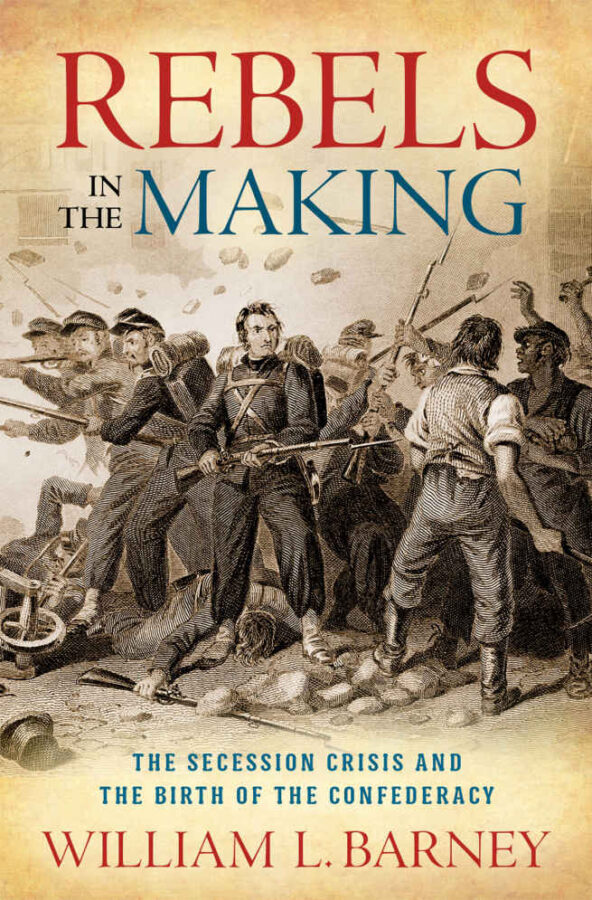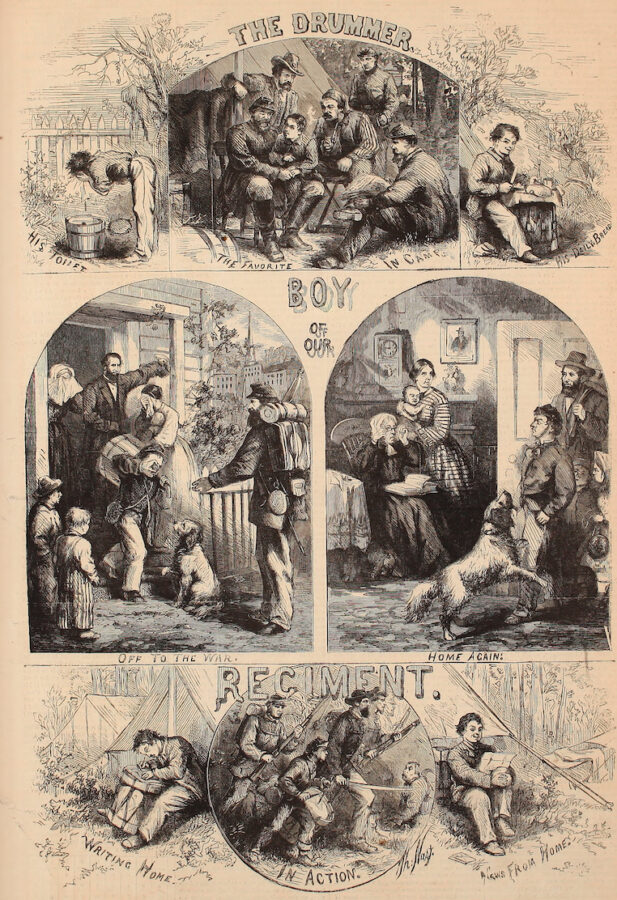Rebels in the Making: The Secession Crisis and the Birth of the Confederacy by William A. Barney. New York: Oxford University Press, 2020. Cloth, ISBN: 978-0-19007-608-5, $34.95.
 Rebels in the Making, writes author William Barney, offers “for the first time, a one-volume narrative history of secession in all the fifteen slave states” (3). In the ensuing 315 pages, Barney guides the reader from the summer of 1860 to the second wave of secession in April and May of 1861, delivering upon his promise to investigate the secessionist debates of slave states: those who chose the Confederacy and those who remained on the border. Within this work of synthesis, Barney claims several contributions to secession studies: an affirmation of the centrality of slavery to secession; an emphasis on the caution of elder planters in contrast to younger slaveholders who saw “their aspirations for planter status blocked”; new evidence of slave resistance through targeted arson; the “understudied economic crisis” after Lincoln’s election that helped secessionists; and the incompatibilities of Northern and Southern visions of capitalism (3-4). Additionally, while relying most heavily on correspondence and newspapers, Barney incorporates the voices of planters, non-slaveholders, women, and the enslaved to weave a well-rounded narrative of this seminal event in U.S. history.
Rebels in the Making, writes author William Barney, offers “for the first time, a one-volume narrative history of secession in all the fifteen slave states” (3). In the ensuing 315 pages, Barney guides the reader from the summer of 1860 to the second wave of secession in April and May of 1861, delivering upon his promise to investigate the secessionist debates of slave states: those who chose the Confederacy and those who remained on the border. Within this work of synthesis, Barney claims several contributions to secession studies: an affirmation of the centrality of slavery to secession; an emphasis on the caution of elder planters in contrast to younger slaveholders who saw “their aspirations for planter status blocked”; new evidence of slave resistance through targeted arson; the “understudied economic crisis” after Lincoln’s election that helped secessionists; and the incompatibilities of Northern and Southern visions of capitalism (3-4). Additionally, while relying most heavily on correspondence and newspapers, Barney incorporates the voices of planters, non-slaveholders, women, and the enslaved to weave a well-rounded narrative of this seminal event in U.S. history.
Barney is certainly not the first to tackle the history of secession. Many historians have studied disunion’s changing meaning over time, and others narrowed their scope to exclusively South Carolina. The elephant in the room is William W. Freehling, cited in the text as the author of “the last major work on secession” (3). The second volume of Freehling’s exhaustive two-part Road to Disunion, titled Secessionists Triumphant: 1854-1861, covers seven years in over 600 pages.
Barney’s research pairs nicely with Freehling’s, and offers more of a state-focused, concise alternative. He adeptly explains the demographics, economics, and voting patterns of each of the fifteen slaveholding states, cementing his claim that secession was neither a given nor a unified state-by-state process. In many narratives of secession, the Lower South states fall like a domino effect and, with the exception of Virginia, the Upper South states are not mentioned until they secede. Not so in Barney’s work. Avoiding teleology, he dedicates a chapter to the Upper South and border states and their decisions not to secede, returning to them after Lincoln’s call for troops.
Though Barney claims a chronological organization and a focus on the years 1860-1861, he begins his first two chapters by thematically surveying the 1850s, describing the cracks in the slaveholding elite and evolving opinions on the ethics and religiosity of slavery (3). The Democratic National Convention in spring 1860 is mentioned in the introduction yet ignored in these two early chapters. John Brown’s raid on Harpers Ferry is similarly cast out of focus. Chapter Three, which begins in summer 1860, marks Barney’s shift to a close, chronological analysis of the years 1860 to 1861. Chapter Four examines reactions to Lincoln’s election, and thus begins Barney’s state-by-state retelling of the push and pull between secessionists, cooperationists, and unionists.
South Carolina receives its own chapter. Barney then pauses during Chapter Six for an analysis of the national reaction to South Carolina’s secession, as well as attempts at compromise. Chapter Seven navigates the secession of the Lower South, dedicating a section to each state, and Chapter Eight describes the initial failures of the Upper South and border state secessionists. Chapter Nine examines the Confederate Constitutional Convention and the ideologies behind their new nation. In addition to cabinet building, the chapter addresses the power struggles between Southern governors and the Confederate government on military and economic issues. Finally, Chapter Ten describes the leadup to the siege of Fort Sumter, conflicts between Abraham Lincoln and William H. Seward, Lincoln’s call for troops, and the ensuing decisions of the Upper South and border states.
Though Barney pulls from a multitude of sources, the usual suspects stand out: Lincoln, Seward, Georgia’s Howell and Thomas Reade Rootes Cobb, Robert Barnwell Rhett, James Buchanan, Jefferson Davis, and Francis Pickens. Though Barney incorporates women throughout, he does not frequently employ a gendered analysis of secession. Though elite white women’s role in maintaining slavery is explained in Chapter One, their role in secession in ways other than ceremonial is less clear. Barney’s bold claim that secession was “empowering” for South Carolina women only rings true for young, elite white women. This includes Northern-born Sally Baxter Hampton, a recurring voice in the study (147).
Rebels in the Making begins with a fascinating vignette about William Robinson and his act of resistance. Defying his enslaver, he opened a letter he was tasked to deliver and learned of the war’s commencement. From this initial tone of Barney’s study, this reviewer expected more black voices and discussion of their roles in influencing secession. Though attention is given to arson and the rumors surrounding enslaved insurrection in the summer of 1860, as well as the plight of wealthy, free people of color in Charleston, there are little to no black voices in the second half of the book. Slaves and slavery are ever-present; the voices and actions of the enslaved are not.
Criticisms aside, Barney delivers on his main promise: to accentuate that slavery was paramount to “the coming of the crisis, the failure to reach a compromise, and the founding mission of the Confederacy” (3). States’ rights was a philosophy deployed only when found useful. Readers will conclude this work with a deep understanding that the battle for secession was fought in a variety of ways depending on the needs of each Southern state and that those crucial months in 1860 and 1861 were a time of both restless waiting and relentless activity. It is a recommended, in-depth primer to secession for academics and classrooms alike.
Melissa DeVelvis received her Ph.D. History from the University of South Carolina. Her dissertation, “Gendering Secession: South Carolina Women and Politics, 1860-1861,” examines the developing political consciousnesses of white South Carolina women from John Brown’s raid to the fall of Fort Sumter.
